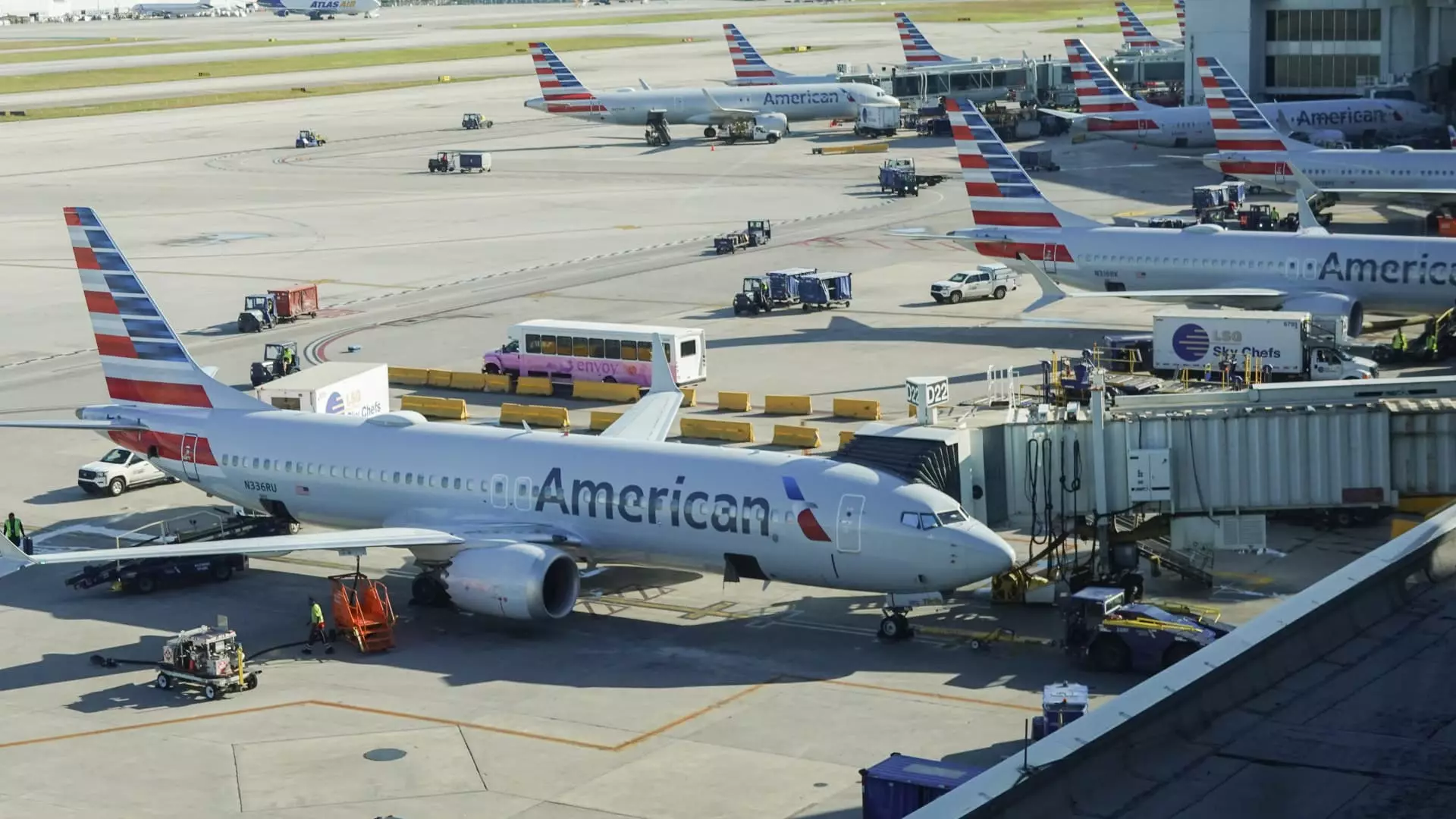On a typical busy holiday travel day, American Airlines found itself facing unexpected turbulence due to a technical malfunction on the morning of Tuesday. As demand for air travel surged, especially during the holiday season, a brief ground stop was enacted due to a malfunction related to network hardware. This disruption, albeit short-lived, highlights the vulnerabilities in airline operations, particularly during peak travel times when efficiency and promptness are paramount.
Around 7:55 a.m. ET, American Airlines lifted the ground stop that had impacted its U.S. flights for a duration of less than an hour. According to a statement from the airline, the issue stemmed from a platform maintained by DXC Technology, which is responsible for the operation of crucial systems that enable flights to leave the gate. These systems manage vital data, including an aircraft’s weight and balance—critical information necessary before takeoff. The swift resolution of the problem allowed operations to resume, but the incident left many travelers on edge.
The Importance of a Smooth Operation
American Airlines acknowledged the inconvenience experienced by passengers, offering apologies as the airline reiterated its commitment to maintaining seamless travel operations. The Federal Aviation Administration (FAA) confirmed that the ground stop was initiated by American Airlines to manage the situation effectively. Ground stops are standard procedures in the aviation industry, typically put in place not only for technical issues but also for severe weather conditions to prevent chaos at destination airports.
Interestingly, American Airlines operated a reduced schedule on Christmas Eve compared to other peak days, potentially mitigating the impact of this disruption. Fortunately, there were no cancellations attributed to the technical issue, illustrating that while hiccups occurred, the airline managed to navigate the situation without extensive delays.
Lessons from Recent Flight Disruptions
This incident serves as a stark reminder of the complexities involved in modern airline operations, particularly the reliance on intricate technological frameworks. In recent months, numerous airlines have faced scrutiny following significant disruptions, such as Southwest Airlines’ operational breakdown last holiday season and Delta’s challenges during a high-profile technical outage. Such events have prompted industry-wide discussions about the robustness of airline infrastructure.
As passenger volume is expected to escalate further during the holiday season, this scenario underscores the critical need for airlines to thoroughly assess and fortify their technological systems. Ensuring that contingency plans are in place is vital—not only for maintaining operational efficiency but also for upholding customer trust in an industry where reliability is paramount.
While American Airlines managed to avoid long-term repercussions from Tuesday’s technical glitch, the episode brings to light the ongoing need for vigilance and proactive measures in air transportation, especially during periods of heightened travel demand.

